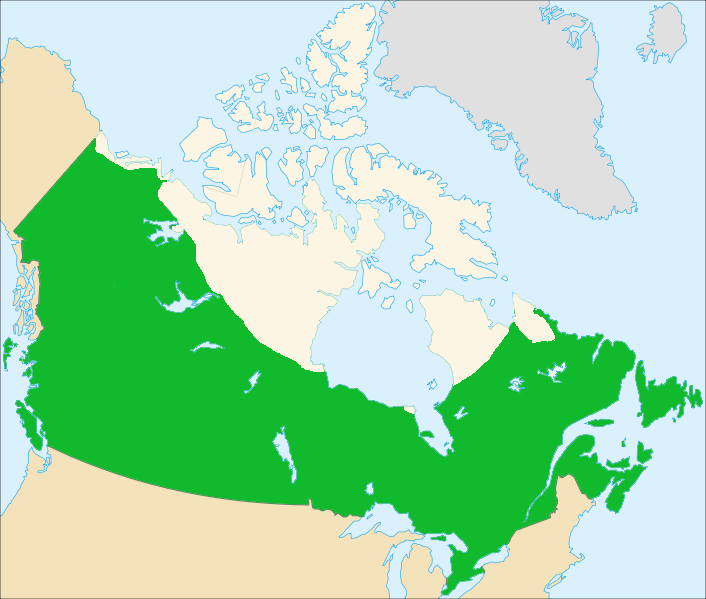Uma lebre-do-ártico como esta percorreu 388 km em 49 dias. Descalça. No gelo. E eu aqui toda orgulhosa com meus 5k 😅 🏆.
#Wildlife Fact: Arctic hares have black eyelashes to protect their eyes from the sun’s glare, just like sunglasses. https://t.co/gGUSJZWSFU pic.twitter.com/xdWOA8RG8U
— Canadian Wildlife Federation (@CWF_FCF) February 12, 2017
Apesar da foto abaixo sugerir isso, a espécie Lepus arcticus não tem a habilidade de voar.
"Arctic Hares" by Fred Lemire.
— Outdoor Photographer (@OutdoorPhotoMag) January 8, 2020
Have your own scenic masterpiece? Enter The 2019 Great Outdoors Photo Contest! Get your scenic shots featured in Outdoor Photographer and win prizes provided by Tamron, SKB, Zeiss and more! https://t.co/Z1nka3P16o #OPOutdoors pic.twitter.com/qQ45I6WIgJ
Foi com suas patinhas que a fêmea, nomeada BBYY, percorreu a maior distância já registrada entre lebres, coelhos ou outras espécies aparentadas.
Artic hare spotted pic.twitter.com/rzi0nda672
— Aud (@AudCoolahan) January 7, 2018
Dá uma olhada no percurso:
No Canadá, a Lepus arcticus vive na região acima da “linha das árvores”, como é chamado nas altas latitudes o limite onde árvores conseguem crescer, por causa do ambiente cada vez mais inóspito ao se aproximar dos polos.

O estudo dos pesquisadores que acompanharam BBYY foi descrito na revista Ecology, e espera-se que dados dela e de outras lebres monitoradas no norte do Canadá possam ser usados para traçar estratégias de conservação no deserto polar.
A conservação é um dos principais objetivos em longo prazo dos estudos que colocam GPS em espécies, mas não somente. Entender o percurso de aves migratórias, padrões sociais e de reprodução, distribuição geográfica e predação, entre outras, podem ser as metas dos cientistas “stalkers” que se dedicam a monitorar a vida selvagem.
Um artigo que acaba de ser publicado na Science, por exemplo, analisou dados acumulados de diversos estudos de migração do rouxinol-pequeno-dos-caniços (Acrocephalus scirpaceus) para tentar entender como eles sabem quando e onde parar de migrar. E o que os pesquisadores descobriram foi que o campo magnético da Terra é fonte de pistas para que os pássaros localizem seus locais de reprodução com mais precisão.
Veja, a seguir, outros exemplos de pesquisadores que colocam GPS em animais
Esse é o desenho que um grupos de lobos traçou no mapa do Voyageurs National Park, em Minnesota (EUA), mostrando como cada grupo evita o grupo concorrente.
Great illustration of wolf pack territoriality from our GPS-collared wolves in 6 different packs in the Greater Voyageurs Ecosystem! Over 68,000 wolf locations were used to make this animation (the collars took locations every 20 min for >6 months). pic.twitter.com/fVUc0AUbYQ
— Voyageurs Wolf Project (@VoyaWolfProject) March 4, 2021
Eles chegaram a colocar uma câmera em um dos lobos, ao estilo “Bruxa de Blair”:
We are very excited to share the first-ever camera collar footage from a wild wolf (to our knowledge). We hope you enjoy seeing the world from a wolf's point of view! (1/6) pic.twitter.com/XHQJ79zXT9
— Voyageurs Wolf Project (@VoyaWolfProject) April 14, 2021
Aqui uma imagem da ninhada mais recente do Parque (só porque é fofo mesmo).
Thinking of warm spring Northwoods days and counting wolf pups on this wintry Monday morning in Voyageurs where it is -22 F outside but feels like -39 F with the wind. pic.twitter.com/u4mlYbBgTM
— Voyageurs Wolf Project (@VoyaWolfProject) January 10, 2022
Ainda sobre lobos, este estudo revelou que o muro construído na fronteira do dos EUA com o México barrou um lobo cinzento mexicano de migrar para o sul. “O muro impede que a fauna faça as migrações/movimentos necessários. E os milhões de animais que não usam GPS?”, disse o editor da National Geographic Douglas Main.
Important: The border wall stopped a Mexican gray wolf from migrating south
— Doug Main (@Douglas_Main) January 21, 2022
This is the first proof of the obvious: the wall prevents wildlife from making necessary migrations/movements
And what about the millions of animals not wearing GPS collars? https://t.co/SkyRg6rNP3
Já essa raposa-do-ártico colocou nossa lebre no chinelo, percorrendo 3.500 km em 76 dias, da Noruega ao Canadá. O GPS indicou que ela chegou a andar 155 km em um dia!
a young female “#Arctic_Fox” traveled over 3,500 km from Norway to Canada in 76 d., it covered an average of 46.3 km/d, and amazingly travelled 155 km in 1 d as it crossed the Greenland ice sheet.#Transmitter #Satellite_Tagging #GPS #Animal #Migration pic.twitter.com/XjbAkVSglY
— Sabir Bin Muzaffar (@sabir_muzaffar) February 11, 2020
Patos flagrados fazendo um bate e volta entre a Espanha e Argélia:
Spain- Algeria- Spain in less than 24 hours!
— JuanMa Perez-García (@JuanMa_PerGar) November 27, 2020
The Marbled ducks don't stop surprising us. Last Sunday one of the GPS tagged ducks in Alicante flew south arriving to Oran in less than 4 hs. It spent the whole of Monday in Oran's Sebkha and in the evening it returned to Alicante😱 pic.twitter.com/ezXQHIsQvv
Este cuco chamado Flappy McFlapperson virou uma celebridade na China, sendo acompanhado de perto nos seus voos. Chegou a fazer mais de 1.000 km em um dia. Com milhares de seguidores, foi capa até da edição internacional do The New York Times, até perecer, em maio de 2018. Mais da história dele aqui.
Concern for FLAPPY MCFLAPPERSON as no signal received since 17 May 2018. Her most recent position is in Myanmar, c100km north of Mandalay and c30km east of the Irrawaddy River. The team have everything crossed we'll hear from her very soon. https://t.co/Ek3OPPJQz9 pic.twitter.com/GLJyVs29a1
— Birding Beijing 北京观鸟 (@BirdingBeijing) May 21, 2018
Aqui, mamãe e filhote de morcegos da fruta egípcios (Rousettus aegyptiacus) devidamente tagueados sendo liberados:
Releasing a GPS tagged mom-pup pair of Egyptian fruit bats back into their cave. You can see the white tags on the mom and on the pup she's carrying @YovelBatLab #Batlife #GPStracking #slowmo pic.twitter.com/umvLV8hNqM
— Lee Harten (@Lharten) May 19, 2019
Seguindo as girafas na Tanzânia para defendê-las:
Following the launch of Tanzania’s National Giraffe Conservation Action Plan, we wasted no time in putting the plan into action. Weather hasn’t been on our side but 11 endangered Masai giraffe in Serengeti NP & Tarangire NP have now been GPS satellite tagged.
— Giraffe Conservation Foundation (GCF) (@Save_Giraffe) February 9, 2020
Photo:Rayno Egner pic.twitter.com/9OY5co3QjR
Esse estudo criou um banco de dados com dados de movimentação de 8 mil animais a região do Ártico:
Movement is critical for animal life in the harsh Arctic. Our paper also created the Arctic Animal Movement Archive (AAMA ,https://t.co/tRJJTvxkRr) with >15 million GPS points of 8,000 individuals from ~ 96 species. This GIF of the AAMA shows the key role of the Arctic globally. pic.twitter.com/lUwWGUuSHJ
— Hebblewhite Lab (@HebblewhiteLab) November 5, 2020
Tartarugas liberadas e vigiadas na Índia:
The first fruits of Baska conservation!
— Indian Turtle Conservation Action Network - ITCAN (@IndianItcan) January 21, 2022
After 12 years of intensive conservation efforts at the specialized breeding centre for the functionally extinct Northern River Terrapin (Batagur Baska) at Sajnekhali, 10 adult individuals were released in Sundarbans Tiger Reserve. pic.twitter.com/vdlmSLNqQj
Nem os tubarões escapam do Grande Irmão científico. Mas é por uma boa causa:
I love maps of GPS tagged animals! This one shows the lovely Great White Shark Nicole who swam from Africa to Australia in only 99 days in 2003/04. Source: https://t.co/AvxAU4dPxF pic.twitter.com/L886Z8aQxZ
— Simon Kuestenmacher (@simongerman600) December 27, 2018
This is so cool. You can see the current position of GPS tagged sharks. My favourite is Ironbound. He is a total unit. https://t.co/bMrcootjoo pic.twitter.com/oNEvjptE12
— Mic Wright (@brokenbottleboy) September 16, 2020
Parecem cometas, mas são marrecos-selvagens migrando:
Migration has begun! Watch our #gps tagged mallards move north to the breeding grounds. @cohenwildlab @tnwildlife @USFWS pic.twitter.com/pZYAh3v92g
— nmasto (@nmasto1) March 11, 2020
Focas-cinzentas pra lá e pra cá na costa da Irlanda:
Earlier this month, researchers from #MaREI, @uccBEES and @_SMRU_ fitted 10 grey seals from the Inishkea Islands with GPS tracking technology, as part of a study on seal-fishery interactions. This map shows how far these incredible animals have travelled! pic.twitter.com/TCUPw0yn62
— MaREI (@MaREIcentre) April 24, 2019
E para fechar nossa rodada de animais tagueados, um brasileirinho com uma boa notícia:
Notícia maravilhosa: Ousado, uma das onças resgatadas com as patas queimadas no Pantanal, está voltando pra casa. Animal está viajando com uma equipe do ICMBio. Eles devem chegar na região na terça. Ousado recebeu um colar GPS para poder ser monitorado 👏👏https://t.co/FOqkXSKJKb pic.twitter.com/XoUmaf1iBk
— Conexão Planeta (@conexaoplaneta) October 19, 2020









